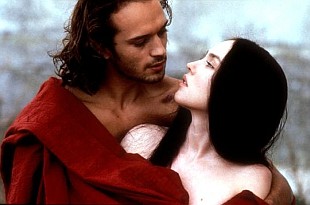
LA REINE MARGOT
(La regina Margot, Francia/1994) R.: Patrice Chéreau. D.: 159'
T. it.: La regina Margot. Sog.: dal romanzo omonimo di Alexandre Dumas padre. Scen.: Danièle Thompson, Patrice Chéreau. F.: Philippe Rousselot. M.: François Gédigier, Hélène Viard. Scg .: Richard Peduzzi, Olivier Radot. Mus.: Goran Bregović. Su.: Dominique Hennequin, Guillaume Sciama. Int.: Isabelle Adjani (Margot), Daniel Auteuil (Enrico di Navarra), Jean- Hugues Anglade (Carlo IX), Virna Lisi (Caterina de’ Medici), Vincent Perez (Hyacinthe de La Môle), Dominique Blanc (Henriette de Nevers), Claudio Amendola (Annibal de Coconas), Asia Argento (Charlotte de Sauve). Prod.: Claude Berri per Renn Productions, France 2 Cinéma, D.A. Films, N .E .F. Film produktion und Vertriebs, Degeto Film, ARD, WMG Film, RCS Films & TV. Pri.pro.: 13 maggio 1994 DCP. D.: 159’. Col. Versione francese con sottotitoli inglesi / French version with English subtitles
Da: Pathé
In occasione dell'imminente ventennale del film, Pathé ha restaurato La Reine Margot sotto la supervisione del regista Patrice Chéreau e del montatore François Gédigier. Il restauro è stato effettuato presso Éclair Group laboratories e L.E. Diapason (per il suono). La versione restaurata è quella del Director's Cut uscito in Dvd nel 2007. Ulteriori minime modifiche volute da Chéreau la arricchiscono ulteriormente. Restaurato in 4K dal negativo 35mm originale.
For the upcoming 20th anniversary of the film's release, Pathé restored La Reine Margot under the supervision of director Patrice Chéreau and editor François Gédigier. The task was entrusted to the Éclair Group laboratories for the images and L.E. Diapason for the sound. This restored version is based on the Director's Cut released on Dvd in 2007. Several additional editing tweaks, desired by Patrice Chéreau, further enrich this new version. The image restoration was conducted in 4k resolution based on the original 35mm negative
La storia di questo film è la Storia della Francia, la nostra Storia. È anche un elogio della tolleranza. Tra i miasmi, le tempeste e le devastazioni del massacro di San Bartolomeo affiorò una fragile speranza: una Francia riconciliata sotto la guida del re Enrico IV. La storia di questo film è la storia di una donna, Margot. Figlia di re, sorella di re, sposa di re, passerà dal campo dei vincitori a quello dei vinti, lascerà gli oppressori per aiutare gli oppressi. Attraverso i due uomini della sua vita conoscerà la persecuzione religiosa, l’ingiustizia e l’odio. La storia di questo film è anche la storia di due uomini: Enrico, il futuro Enrico IV, e La Môle, protestante idealista, puro e indomabile, che si sacrificherà per Margot. È anche la storia di una famiglia, una famiglia mostruosa riunita attorno a una madre paradossale, Caterina de’ Medici. Vestita di nero, eternamente in lutto, Caterina detta legge a tutto e tutti. Possiede, si dice, un mazzo di chiavi con cui può aprire tutte le porte del Louvre. Niente le sfugge, niente per lei può rimanere segreto. Ha tre figli maschi che non avranno discendenti. È dunque la fine di una famiglia, la fine di una stirpe condannata. È anche l’epoca delle guerre di religione. Bisognerà mostrare quest’epoca fanatica e pagana, religiosa e sensuale, mostrare la morte accanto ai piaceri carnali, il senso di colpa insieme al gusto del piacere. Un’epoca in cui la morte non contava. Perché sono Shakespeare e Marlowe che dovremo ritrovare in questo film. […] Significa anche mostrare la Storia di oggi attraverso il prisma del Rinascimento. Significa ritrovare a un tempo la forma incredibilmente mobile e flessibile del grande cinema (Huston, forse, e soprattutto Coppola e Scorsese) ma anche la forza del reportage, di certi servizi televisivi che ci costringono a guardare in faccia la ferocia dei nostri tempi.
Patrice Chéreau
The story of this film, its history, is the History of France, our History. It is also a eulogy of tolerance. Through the bleak odium, the storms and the destruction of the Saint Bartholomew’s Day massacre, a fragile hope was born: a reconciled France, under the leadership of King Henri IV. The story of this film is the story of a woman, Margot. Daughter of a king, sister of a king, wife of a king, she will leave the side of the victors for the side of the vanquished. She will leave the side of the oppressors to side with the oppressed. She will learn about persecuted beliefs, injustice and hatred, thanks to the two men in her life. The story of this film is also the story of those two men: Henri, who became Henri IV, and La Môle, an idealistic Protestant, both pure and fierce, who will give his life for Margot. It is also the story of a family, a monstrous family gathered around a paradoxical mother Catherine of Medici. Shrouded in black, in everlasting mourning, she rules over everything. It is said she owns a set of keys with which she may open every door in the Louvre. Nothing escapes her, nothing remains a secret from her. She has three sons, but none will have children. So it is also the end of a family, the end of a condemned lineage. It is also the time of the Wars of Religion. We shall have to show this pagan yet fanatical period, to show how religious and sensuous it was, show death alongside the pleasures of the flesh, the feeling of sin alongside the taste for pleasure. A period in which death did not count. For it is a Shakespeare and Marlowe that one must find in this movie. It also means showing today's History as seen through the prism of the Renaissance. It means finding both the form of great cinematography, incredibly mobile and flexible (John Huston maybe, especially Francis Ford Coppola and Martin Scorsese), but also finding the power of today's documentaries, the ‘News' that television sometimes shows us, and that obliges us to look the brutality of our time straight in the eye.
Patrice Chéreau

Tariffe:
Aria condizionata
Accesso disabili
Tel. 051 522285











